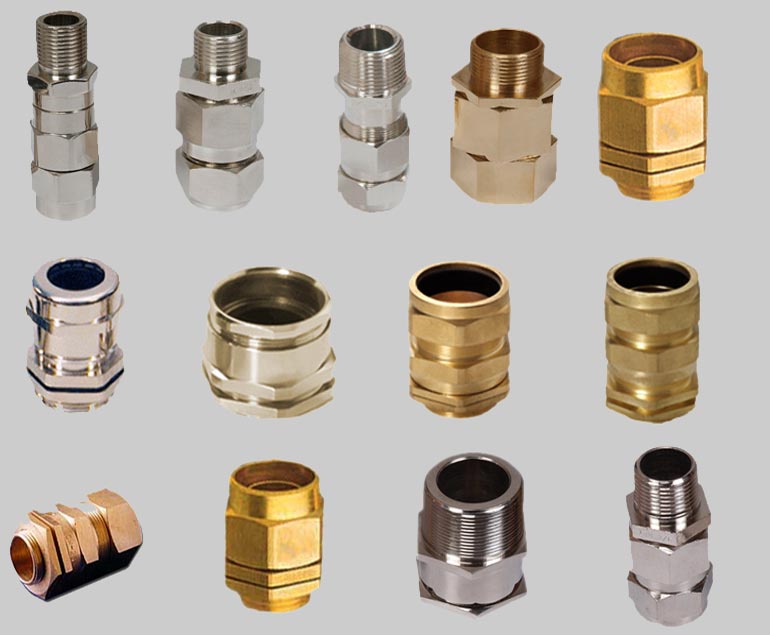Cable Glands
Types:
- Single compression - typically used within buildings and for smaller installations
- Double compression - mainly used in power plants and factories where stronger seals are required. These glands feature double sealing and the application of double compression at the cable core and on the outer sheathing or armour
- Flexible hose - used in higher temperature locations
- PVC - typically used for control cables attached to instrumentation

Presentation
Cable glands are connectors used to seal the ends of cables and secure them to plugs, terminals, enclosures or electrical equipment of various kinds. They can protect sensitive electrical wiring from moisture, contamination, corrosion and even flammable gas.
Glands are used for cables laid outdoors or in harsh environments, and also for passing cabling through plating or bulkheads. Cable glands are used with all types of power, data, control, instrumentation, automation and telecommunication cable.
They have a number of alternative names, including mechanical cable entry devices, cable connectors, cable fittings, and cord grips.
Cable glands are made by combining a central enclosure or body through which cabling can pass with several attachments. These are typically a lock (or check) nut, washers, seal, attachment claw or cone, and a sealing (or compression) nut. Some models also feature two-part enclosures, tags for electrical earthing, PVC shrouding (insulation) or neoprene (rubber) sealing.
The size, arrangement and design of these vary according to the type of cable gland. Cable glands have the following principal functions:
- Fixing cables in place and preventing them from being twisted or accidentally pulled out
- Providing an airtight seal to keep out dust, dirt, water and moisture - a key function with electrical equipment
- Fortifying the cable against strain
- Protecting the vulnerable end of the cable from damage. Some also help to earth electrical cables and cut the risk of shocks and electrocution
